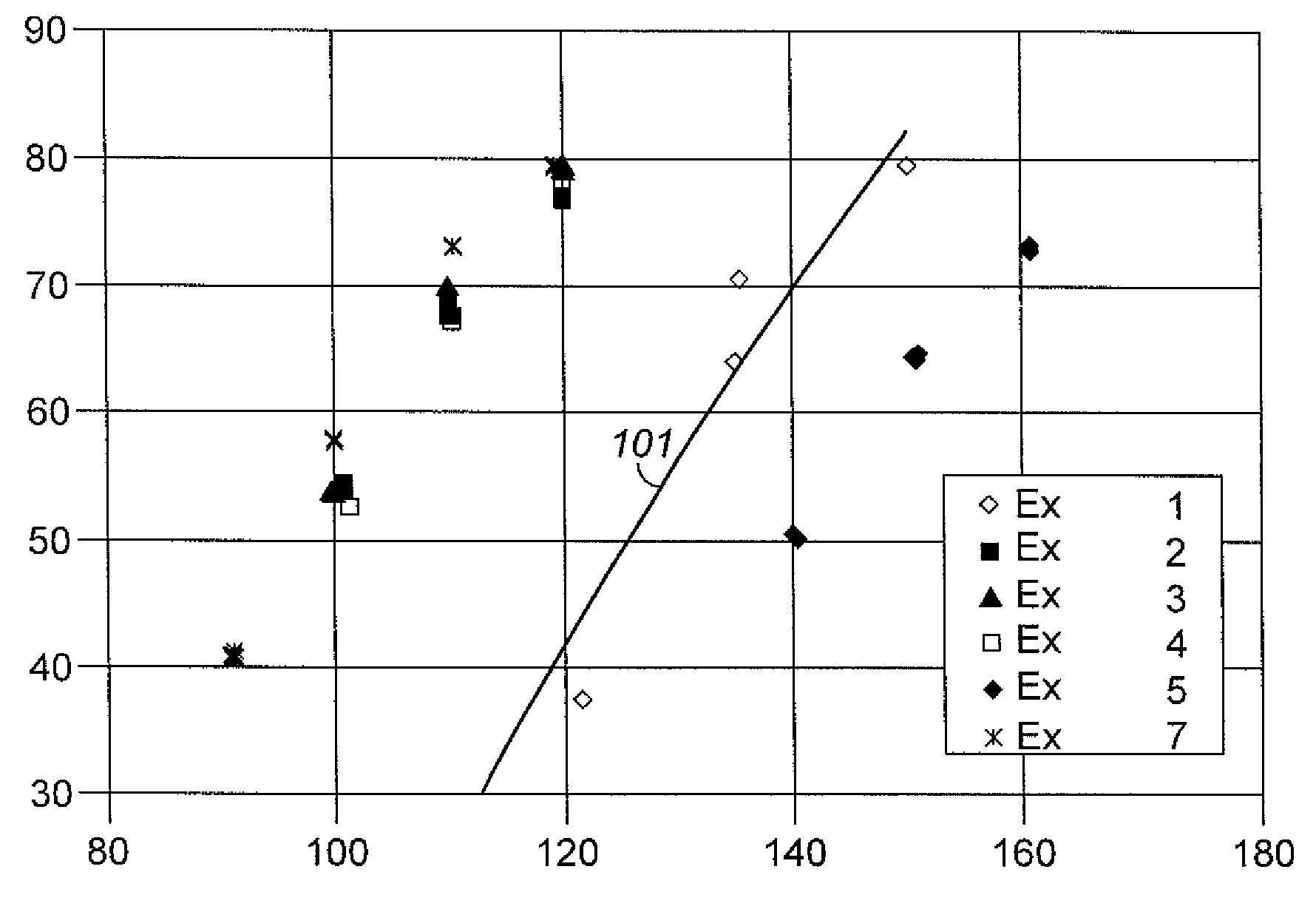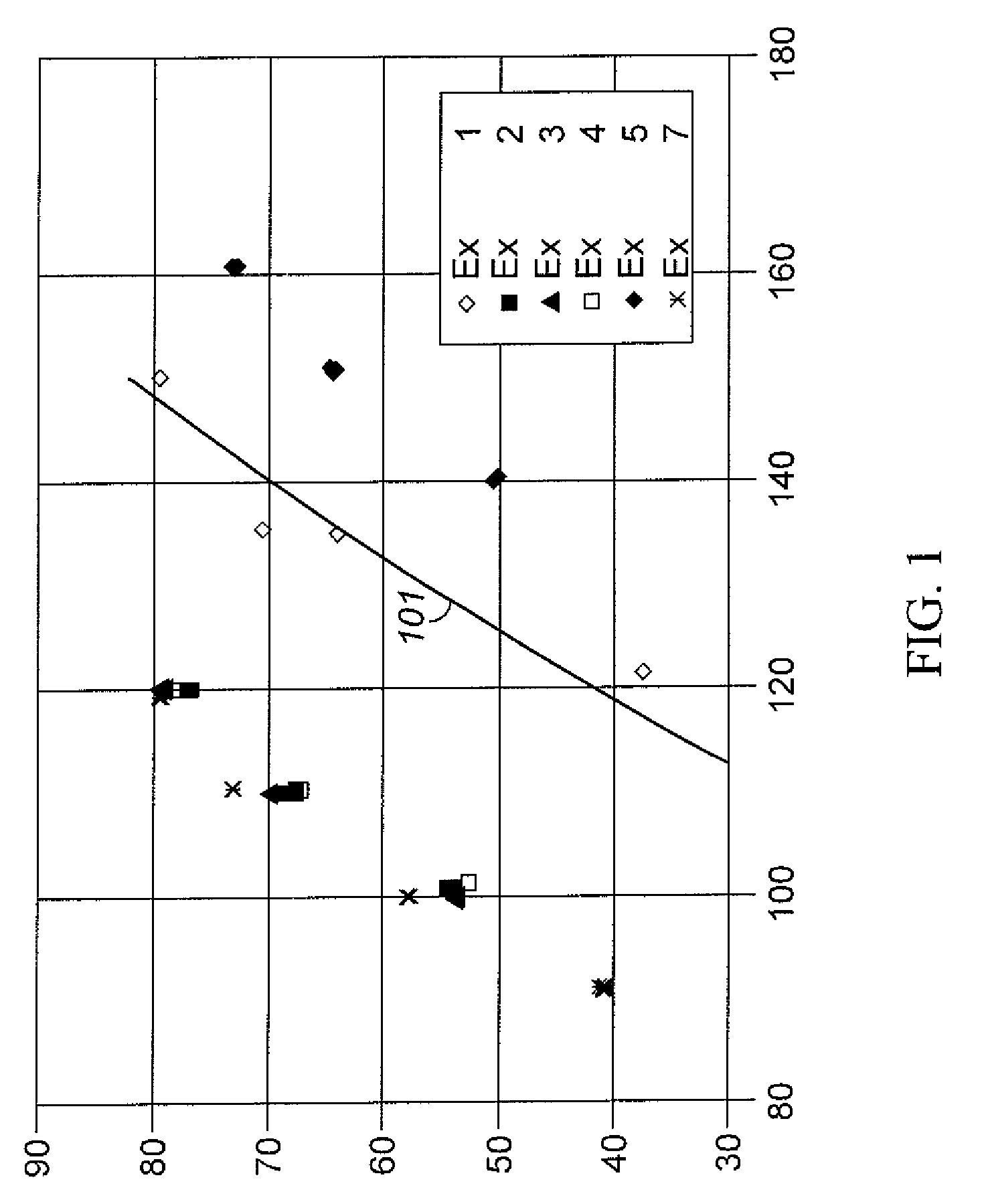Aromatic Transalkylation Using a Y-85 Zeolite
a technology of y-85 zeolite and y-85 zeolite, which is applied in the direction of hydrocarbon preparation catalysts, physical/chemical process catalysts, bulk chemical production, etc., can solve the problem of unacceptably low rate of y-85 zeolites transalkylation, and achieve the effect of reducing npb formation and increasing activity
- Summary
- Abstract
- Description
- Claims
- Application Information
AI Technical Summary
Benefits of technology
Problems solved by technology
Method used
Image
Examples
example 2
[0059]Another sample of the Y-74 zeolite used in Example was slurried in a 15 wt % NH4NO3 aqueous solution. The pH of the slurry was lowered flom 4 to 2 by adding a sufficient quantity of a solution of 17 wt % HNO3. Therearter the slurry temperature was heated up to 75° C. (167° F.) and maintained for 1 hour. After 1 hour of contact at 75° C. (167° F.), the slurry was filtered and the filter cake was washed with an excessive amount of warm de-ionized water. These acid extraction in the presence of NH4+ ion exchange, filtering, and water wash steps were repeated one time, and the resulting filter cake had a bulk Si / Al2 ratio of 11.5, a sodium content of less than 0.01 wt % determined as Na2O on a dry basis, and a unit cell size of 24.47 Å. The resulting filter cake was dried to an appropriate moisture level, mixed with IINO3-peptized Pural SB alumina to give a mixture of 80 parts by weight of zeolite and 20 parts by weight Al2O3 binder on a dry basis, and then extruded into 1.59 mm (...
example 3
[0060]Another sample of the Y-74 zeolite used in Example 1 was slurried in a 15 wt % NH4NO3 aqueous solution. A sufficient quantity of a 17 wt % HNO3 solution was added over a period of 30 minutes to remove part of extra-framework aluminum. Thereafter the slurry temperature was heated up to 79° C. (175° F.) and maintained for 90 minutes. After 90 minutes of contact at 79° C. (175° F.), the slurry was filtered and the filter cake was washed with a 22% ammonium nitrate solution followed by a water wash with an excessive amount of warm de-ionized water. Unlike example 2, the acid extraction in the presence of ammonium nitrate was not repeated for the second time. The resulting filter cake had a bulk Si / Al2 ratio of 8.52, a sodium content of 0.18 wt % determined as Na2O on a dry basis. The resulting filter cake was dried, mixed with HNO3-peptized Pural SB alumina, extruded, dried, and calcined in the manner described for Example 2. Properties of the catalyst were a unit cell size of 24....
example 4
[0061]The same procedure described in Example 3 was followed in Example 4 with the exception that in comparison with Example 3, an increase of 33% HNO3 was used. The same stabilized Y-74 used in Example 1 was slurried in a 15 wt % NH4NO3 aqueous solution. A sufficient quantity of 17 wt % HNO3 was added to over a period of 30 minutes to remove extra-framework aluminum. Thereafter the slurry temperature was heated up to 79° C. (175° F.) and maintained for 90 minutes. After 90 minutes of contact at 79° C. (175° F.), the slurry was filtered and the filter cake was washed with an excessive amount of warm de-ionized water. These NH4+ ion exchange, filtering, and water wash steps were not repeated, unlike Example 2. The resulting filter cake had a bulk Si / Al2 ratio of 10.10, a sodium content of 0.16 wt % determined as Na2O on a dry basis. The resulting filter cake was dried, mixed with HNO3-peptized Pural SB alumina, extruded, dried, and calcined in the manner described for Example 2. Prop...
PUM
| Property | Measurement | Unit |
|---|---|---|
| temperature | aaaaa | aaaaa |
| molar ratio | aaaaa | aaaaa |
| temperature | aaaaa | aaaaa |
Abstract
Description
Claims
Application Information
 Login to View More
Login to View More - R&D
- Intellectual Property
- Life Sciences
- Materials
- Tech Scout
- Unparalleled Data Quality
- Higher Quality Content
- 60% Fewer Hallucinations
Browse by: Latest US Patents, China's latest patents, Technical Efficacy Thesaurus, Application Domain, Technology Topic, Popular Technical Reports.
© 2025 PatSnap. All rights reserved.Legal|Privacy policy|Modern Slavery Act Transparency Statement|Sitemap|About US| Contact US: help@patsnap.com



